FSX Long Island's Roosevelt Field Scenery
 Long Island's Roosevelt Field. From the Ghost Airports Collection, here is Long Island's famed Roosevelt Field that was part of the heart and soul of the Cradle of Aviation area about twenty miles east of New York City, NY. At its height, it was the busiest civilian airport in the nation. Famo...
Long Island's Roosevelt Field. From the Ghost Airports Collection, here is Long Island's famed Roosevelt Field that was part of the heart and soul of the Cradle of Aviation area about twenty miles east of New York City, NY. At its height, it was the busiest civilian airport in the nation. Famo...
- Country
-
United States of America
- Download hits
- 426
- Compatibility
- Flight Simulator XPrepar3D
- Filename
- ghost_airports_rooseveltfield_mineola_new_york.zip
- File size
- 266.13 KB
- Virus Scan
- Scanned 10 days ago (clean)
- Access to file
- Free (Freeware)
- Content Rating
- Everyone
Long Island's Roosevelt Field. From the Ghost Airports Collection, here is Long Island's famed Roosevelt Field that was part of the heart and soul of the Cradle of Aviation area about twenty miles east of New York City, NY. At its height, it was the busiest civilian airport in the nation. Famous events took place at Roosevelt Field including Charles Lindberg's departure for Paris. Peer through this porthole into history with FSX and Richard O. Finley's Roosevelt Field.

Screenshot of plane flying over Roosevelt Field.
Roosevelt Field was originally known as Hempstead Plains. It was a glacially scrubbed area that never did support much tree growth. Early aviators used it as a “flying field”. At that time, the term “airport” had not even been invented.
There is a difference between airports and flying fields. Early airplanes tended to be both aerodynamically and mechanically unsound by today's standards. The average pilot flew his temperamental contraption only over the flying field so he could land immediately if he encountered a problem. Only the true daredevils and aerial pioneers ventured away from the flying field. The implication here is that the flying field had to be large as compared to an airport. As airplanes got more reliable, the size of the land needed for their operation decreased – that is, until they discovered the desirability of high performance.
With the coming of WWI, Hempstead Plains was taken over by the U.S. Government for the establishment of an Army training field. They named the northern portion along Old Country Road ”Hazelhurst Flying Field #1”. On September 24, 1918, the Army changed the name of the airfield to Roosevelt Field in honor of Quentin Roosevelt, son of former president Teddy Roosevelt. Quentin Roosevelt had been a WWI aviator who was killed in the war. ”Hazelhurst Flying Field #2” lay to the south about two miles. It became Mitchell Field, an Army Air Corps airfield where Jimmy Doolittle and his team developed instrument flying.
After the war, the government sold off the northern flying field. The new owners sold off the land at the southern edge of the old flying field. The remainder was naturally divided into two halves by a fifteen to twenty foot bluff which can still be seen especially where Zeckendorf Avenue intersects Old Country Road. That change in field elevation can also be observed with Google Earth.
Curtiss Aircraft Corporation bought the western half and named it Curtiss Field. The eastern half remained Roosevelt Field. The resulting situation was highly unusual by today's standards. The idea of two active airports being immediate neighbors is unheard-of today.
In 1929, Curtiss Corporation sold Curtiss Field back to Roosevelt Field Inc.. The whole thing again became Roosevelt Field. In 1936, Roosevelt Field's owners sold the eastern portion of Roosevelt field to some investors who wanted to build a race track. When that happened, the portion that had been Curtiss Field now stood as Roosevelt Field.
At its peak in the 1930s, Roosevelt Field was America’s busiest civilian airfield. Many famous pilots like Amelia Earhardt and Wiley Post used Roosevelt Field. When Kelly and MacCready brought the Army Fokker T-2 to New York in 1924 to begin America's first non-stop transcontinental flight, they landed at Mitchell Field, the nearby Army Air Corps airfield. They hopped the T-2 over to Roosevelt Field for the actual departure because it had a longer runway.
René Fonck, a famous French ace from WWI, came to New York in 1926. He had been working with Igor Sikorski to modify the Sikorski S-35 twin engine airliner design to make it a tri-motor capable of the flight from New York to Paris for the Orteig prize. On his August 21, 1926 takeoff attempt from Roosevelt Field, part of the landing gear of the heavily overloaded transport failed. A wingtip caught causing the airplane to cartwheel and break up. A fuel tank ruptured in the crash and the aircraft was consumed in a massive fire. Fonck and two of his crew survived but two other crew members died in the accident.
When Lindberg came to New York in 1927, he landed and hangared the Spirit of St. Louis at Curtiss field. He had the Spirit towed to Roosevelt Field for his famous departure.
Roosevelt Field was used by the Army and Navy during WWII. After the war, it went back to a commercial airport until its closure on May 31, 1951.
There was an air museum on the field. It closed with the airport. The more desirable airplanes in their collection went to movie companies in Hollywood. The remaining collection of airplanes and aviation pieces was purchased by a mechanic formally employed at Roosevelt Field named Cole Palen. The late Mr. Palen moved his collection to his parents' farm near Rhinebeck, NY. That collection became the basis for the now world famous Old Rhinebeck Aerodrome, America's original living museum of antique airplanes from World War I and World War II
Today, the Roosevelt Field site is the new heart of the Westbury, NY business district. The point where Lindberg started his famous takeoff, as best I can determine, is now where a Target store is located. The Roosevelt Field Mall occupies the western portion of what was Curtiss Field. The Meadowbrook Parkway runs through the main part of the old Curtiss Field. The rest of this area, once known as the Cradle of Aviation, is now home to various and sundry businesses.
Installation:
This scenery is for FSX only. Put the two .bgl files from the downloaded Zip file into the folder~~microsoft flight simulator X\addon scenery\scenery.
This scenery is for daytime operation. I have not worked out the lighting yet. Hope you enjoy it.
Richard O. Finley

Finding the Scenery
- FSX/Prepar3D Coordinates:
-
40.73980000,-73.61210000
Use the downloaded flight plan file by launching FSX/P3D, selecting "Load Flight Plan" in the flight planner, and choosing the .pln file. Your aircraft will be positioned directly at the add-on’s location. - Decimal Degrees (DD):
-
Latitude: 40.739800°
Longitude: -73.612100° - Degrees, Minutes, Seconds (DMS):
-
Latitude: 40° 44' 23.280" N
Longitude: 73° 36' 43.560" W
Map Location
The archive ghost_airports_rooseveltfield_mineola_new_york.zip has 6 files and directories contained within it.
File Contents
This list displays the first 500 files in the package. If the package has more, you will need to download it to view them.
| Filename/Directory | File Date | File Size |
|---|---|---|
| KRVT_ADEX_ROF.BGL | 01.06.11 | 12.85 kB |
| KRVT_ADEX_ROF_CVX.bgl | 01.06.11 | 850 B |
| Ghost_Airports_Roosevelt Field_Mineola_New_York.jpg | 02.06.11 | 265.15 kB |
| Readme.txt | 02.06.11 | 5.22 kB |
| flyawaysimulation.txt | 10.29.13 | 959 B |
| Go to Fly Away Simulation.url | 01.22.16 | 52 B |
Installation Instructions
Most of the freeware add-on aircraft and scenery packages in our file library come with easy installation instructions which you can read above in the file description. For further installation help, please see our Flight School for our full range of tutorials or view the README file contained within the download. If in doubt, you may also ask a question or view existing answers in our dedicated Q&A forum.
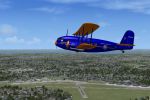

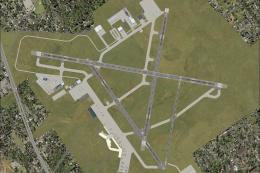

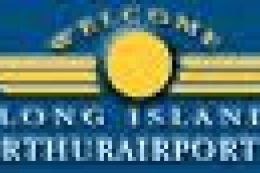
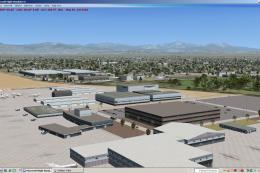

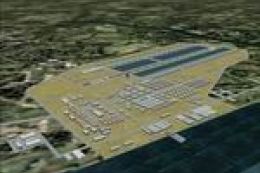
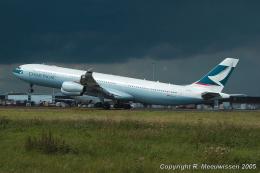
0 comments
Leave a Response